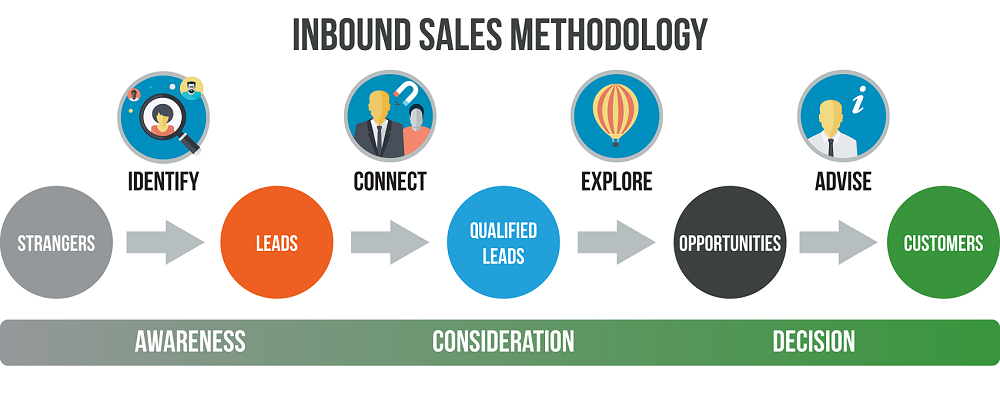Related Articles
Sales methodologies are strategic frameworks that guides sales representatives on how to sell products in the most diligent way possible.
It is different from a sales process, which outlines how to approach each step with concise details; sales methodology only deals with specific aspects of the product, such as qualification, demonstration, discovery etc.
The type of methodology used differs from market to market, and can be influenced by other factors such as the industry position, vertical or horizontal firms, what type of industry it is (service-based or manufacturing) etc.
However, it is simpler to use the same sales methodology for different teams in one firm to reduce confusion between departments.

Types of Sales Methodologies
Outlined below are 8 successful frameworks used in various fields.
1. SPIN selling
SPIN is an acronym that stands for Situation, Problem, Implication and Need-Payoff.
The acronym represents the four main questions sales reps are supposed to ask prospects. This method was first popularized in 1989 by Neil Rackham in his eponymous book.
The flow of the questions help the client reach a solution effectively:
- Situation questions are targeted to understand the circumstances of the client, despite the amounts of research done before the call is made.
“How do you keep track of invoices and inventory? “
- Problem questions address the core issue at hand.
“Where does the tracking process start to break down?” - Implication questions help the client visualize the ramifications of not solving the problem immediately.
“Due to this broken tracking system, has your department become inefficient?” - Need-payoff questions allows the prospects to think about the advantages that come with a possible solution to the problem.
“If a specialized software was installed to track inventory and invoices in separate modules, would this reduce the inefficiency of procurement?”
Questions like this build rapport with prospects and solves the challenges they face by reframing the situation.
2. SNAP selling
The assumption made while deploying this strategy is that customers are frazzled, distracted and busy. Thus it is important to close deals and quicken the sales process as fast as possible. This helps to ensure the client receives valuable information through the four directives mentioned in the acronym: Keep it Simple, be Invaluable, Align with the needs of consumers and raise Priorities. After being introduced in 2012 by Jill Konrath, SNAP selling has become of the most frequently used methods due to its fast results and efficiency.
3. NEAT selling
NEAT stands for core Needs, Economic Impacts, Access to Authority and Timeline. Developed by the Harris Consulting Group and Sales, this strategy has its roots in the BANT (Budget, Authority, Need and Timeline) and ANUM (Authority, Need, Urgency and Money). The flow of these questions helps employees do the following things:
- Highlight key issues or needs that are at the heart of the problem
- Articulate the economic benefits in a coherent, simple manner
- Engage colleagues who can influence others when direct engagement is unavailable
- Specify a deadline by which the prospect has to make a decision
4. MEDDIC
MEDDIC stands for Metrics, Economic Buyer, Decision Criteria, Decision Process, Identifying Pain and Champion. This method is for complex enterprise sales and is tightly controlled and tech-driven. The questions are posed in this manner:
- Metrics: What is the current economic status?
- Economic buyer: Who prepares the budget and the plan?
- Decision criteria: What are the conditions that need to be met to be selected as a vendor?
- Decision process: In which stages will a vendor be selected?
- Identify pain: What is the breaking point and the financial ramifications if the problem is not solved?
- Champion: Who is selling products on your behalf?
5. Sandler Selling Method
The Sandler selling system may be the best at grabbing the attention of most prospects and encouraging them to talk about their problems. Thus, the sales rep pitches the idea in a way that caters to the needs of these people. The principle behind this strategy is the idea that both parties must be equally invested in this transaction; sales reps act as trusted advisors who guide to buy the product of highest value, and enthusiastic customers become long-time consumers due to the sheer amount of effort seen in reps. In B2B sales, key benefits include more deals closing, more relationships built and more leads qualified.
6. Challenger Sale
Through this method, sales reps are first categorized into five main branches: hard workers, problem solvers, relationship builders, lone wolves and challengers. Needless to say, research conducted by Matthew Dixon, author of the book The Challenger Methodology, showed that challengers were most successful in closing deals and for converting prospects into long-term consumers. They do this using the “teach-tailor-take” technique: teach the client about larger projects and new insights of the business, tailor their communications to consumers and their higher-ups and take control of the deal by pushing back on the consumer and not budging in a non-negotiable offer.
7. Customer Centric selling
This method is unique in that its sole purpose is to focus on the struggles, goals and ease of the consumer. Activities and meetings can be adjusted according to the schedule of such clients. In the following ways, CCS becomes most effective:
- Converse situationally instead of making presentations
- Ask relevant questions rather than offering opinions
- Focus on solutions instead of relationships
- Target decision makers instead of users
- Promote product usage to garner interest
- Strive to be the best seller rather than the most unavailable
- Close within the buyer’s timeline instead of the seller’s
- Empower buyers to buy, as opposed to opponents convincing them to do otherwise
8. Solution Selling
This method acknowledges that consumers are aware of constituents of goods and services and have done adequate research before deciding on a specific product to buy. Solution selling combines parts of different products to create a custom package that reduces pain for consumers by creating exactly the product they wanted. Adopted widely in the 1980s, this involves working with a set of agreed-upon criteria and later evolved to suit changes in buyer maturity and business environment.
Within these 8 strategies, you will hopefully find the perfect match for your firm to start working on for future projects.




